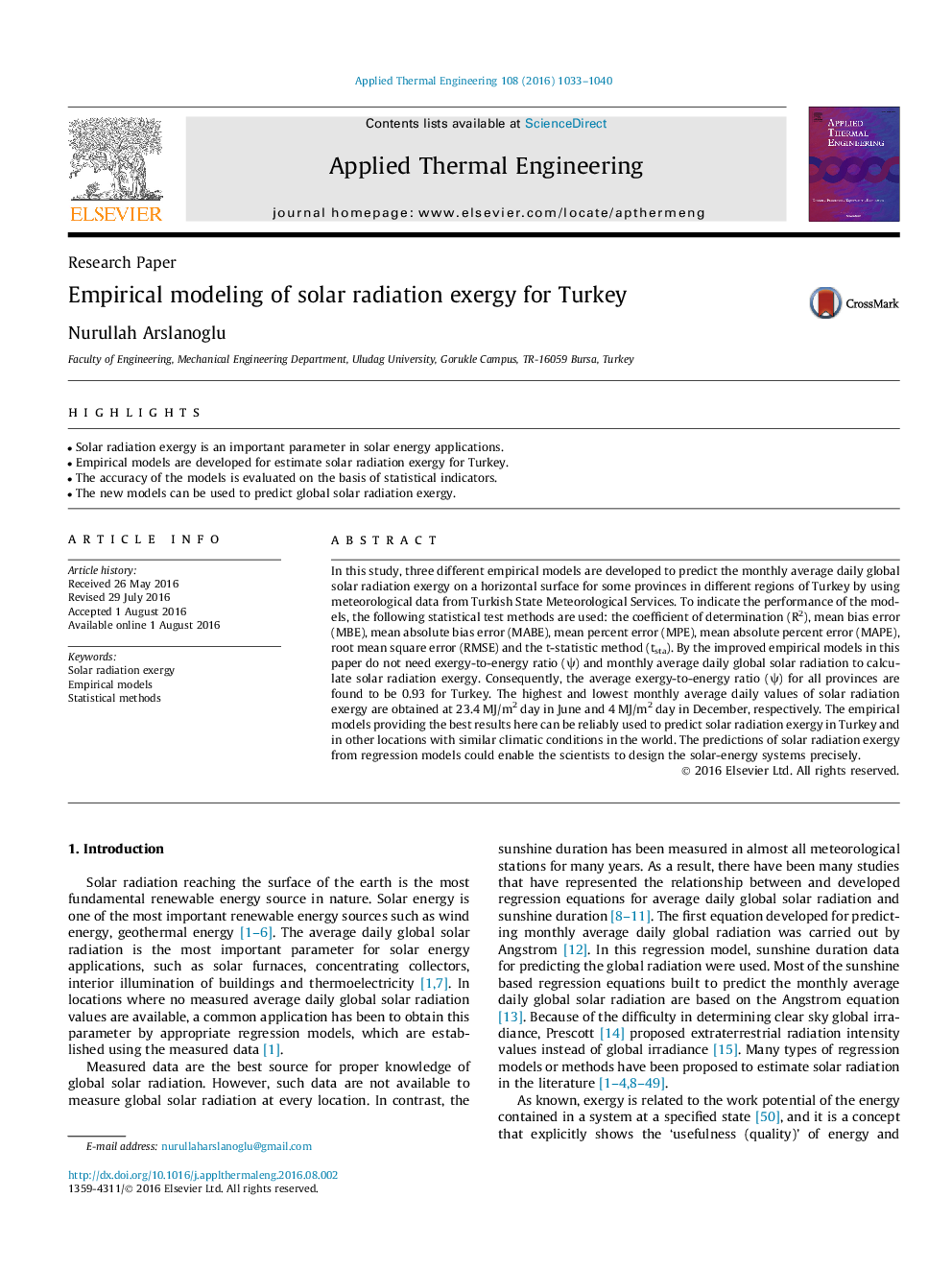| Article ID | Journal | Published Year | Pages | File Type |
|---|---|---|---|---|
| 7046978 | Applied Thermal Engineering | 2016 | 8 Pages |
Abstract
In this study, three different empirical models are developed to predict the monthly average daily global solar radiation exergy on a horizontal surface for some provinces in different regions of Turkey by using meteorological data from Turkish State Meteorological Services. To indicate the performance of the models, the following statistical test methods are used: the coefficient of determination (R2), mean bias error (MBE), mean absolute bias error (MABE), mean percent error (MPE), mean absolute percent error (MAPE), root mean square error (RMSE) and the t-statistic method (tsta). By the improved empirical models in this paper do not need exergy-to-energy ratio (Ï) and monthly average daily global solar radiation to calculate solar radiation exergy. Consequently, the average exergy-to-energy ratio (Ï) for all provinces are found to be 0.93 for Turkey. The highest and lowest monthly average daily values of solar radiation exergy are obtained at 23.4Â MJ/m2Â day in June and 4Â MJ/m2Â day in December, respectively. The empirical models providing the best results here can be reliably used to predict solar radiation exergy in Turkey and in other locations with similar climatic conditions in the world. The predictions of solar radiation exergy from regression models could enable the scientists to design the solar-energy systems precisely.
Keywords
Related Topics
Physical Sciences and Engineering
Chemical Engineering
Fluid Flow and Transfer Processes
Authors
Nurullah Arslanoglu,
